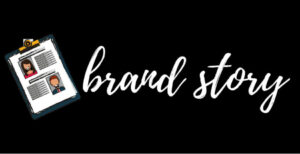
Employee Onboarding Excellence: How to Succeed From Day One
Sponsored by Firstup. We’ve all encountered employee onboarding nightmares. Perhaps your manager forgot your start date. Or maybe the tools and technology assigned to you didn’t

Sponsored by Firstup. We’ve all encountered employee onboarding nightmares. Perhaps your manager forgot your start date. Or maybe the tools and technology assigned to you didn’t

Although layoffs have been hovering at historically low levels in the U.S., that doesn’t mean they are rare. For instance, in March 2024, over 1.5

If you follow tech industry news, you’re no doubt aware of ongoing layoffs at Google. Early this year, a New York Times reporter asked me

The challenges talent leaders face these days with recruitment marketing remind me of my past life as a swimmer. Despite the early mornings, hard workouts,

Driven by an ever-growing desire for personalized, convenient, seamlessly integrated experiences, customer expectations continue to evolve at breakneck speed. To meet these expectations, organizations must

In recent years, we’ve seen an explosion in new and improved digital tools for HR and work activities. But with the landscape changing so rapidly,

Automation is a red-hot topic in business circles, and HR is no exception. For instance, to compete in today’s challenging labor market, many employers are

Human resources can be a highly rewarding profession, especially at technology startup companies. In fact, recent research says effective human resources management actually helps drive

These days, any employer that doesn’t lead with purpose is fighting an uphill battle. Why? Take a look at recent headlines. They’re filled with news

If pay transparency isn’t yet a hot topic in your organization, it soon will be. Recently, several states have passed pay transparency laws, and others

For most office-based employees, “work” no longer represents a physical location. In fact, 84% of people who worked remotely during the pandemic said they intended

For decades, higher education has been considered the best way to gain the knowledge and experience employees need for a successful career. (At least, that’s

We may or may not be heading for an economic downturn this year, but we certainly are seeing a slew of layoffs. The technology industry

What is ChatGPT? It’s no secret — recruiting professionals are still struggling to find strong candidates for job openings. Competition for top talent remains fierce,

Every employer’s definition of talent acquisition success is different. But many employers have learned valuable lessons over the years. Recently, we decided to capture some

Recent headlines are shining a bright light on high-profile layoffs in the technology industry. But for many employers, IT recruiting is still an uphill battle

How would you define the perfect job offer? Some people think it’s about finding a magic number that will seal the deal with the right

If your organization is like most, you’re constantly looking for ways to strengthen your workforce through smarter talent acquisition tactics. Although recruiting has shifted dramatically

Spooky season is upon us! People are carving pumpkins, dressing in crazy costumes, and swapping scary stories. So, in the spirit of Halloween, we’re taking

We’ve all seen alarming headlines about “The Great Resignation.” Some observers say it shows no signs of letting up. McKinsey recently called it the “quitting

Life lessons roll in at an interesting pace. Sometimes they are slow and steady. Other times, they fly at us with momentum and fervor. Let’s

A recent analysis by McKinsey found that the pandemic has transformed how we work for good. Yes, some of us will return to the workplace.

In 2020, 82 percent of business leaders surveyed by Gartner pledged to continue remote work arrangements permanently. This translates to millions of people working from

Marketing and HR have started to collaborate with great success. Here’s why it might be time to bring a marketer on to the HR team full time.

As competition for top talent continues to heat up, here’s a recruitment strategy worth embracing—tapping into your company’s biggest assets, your employees. By now you’ve